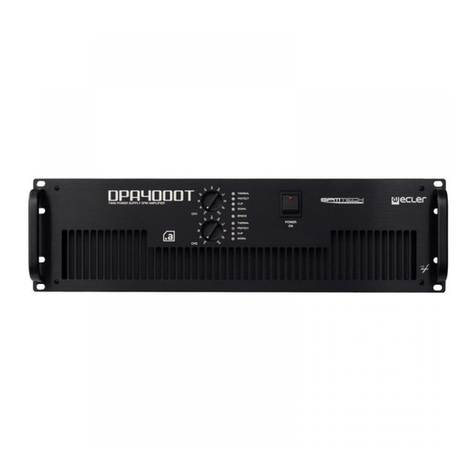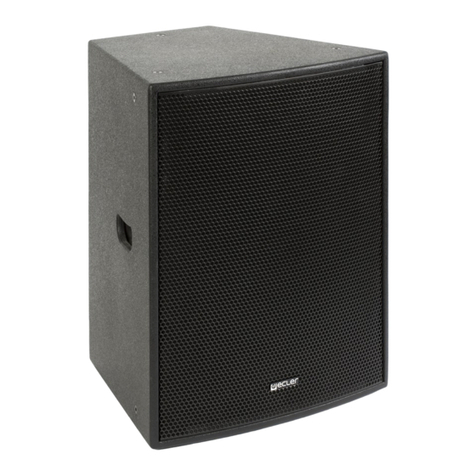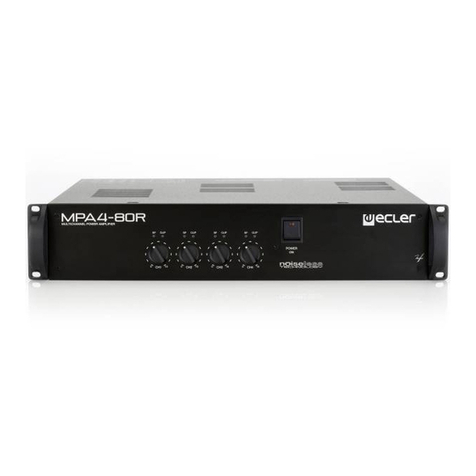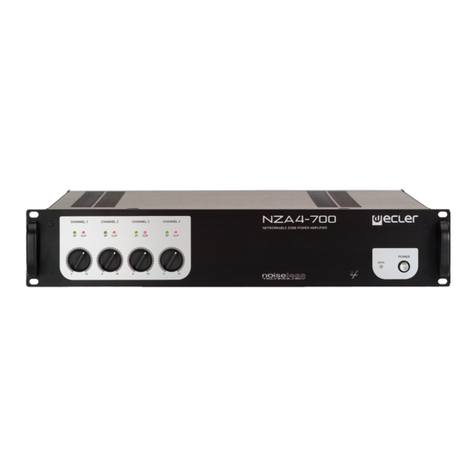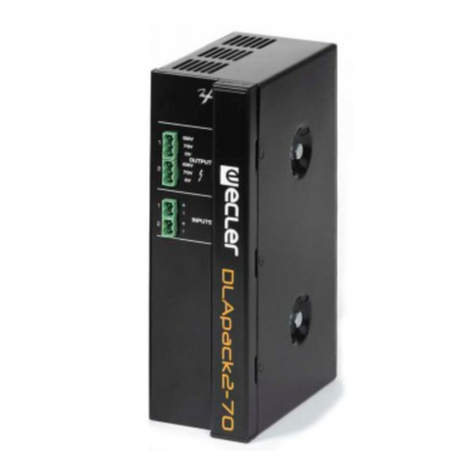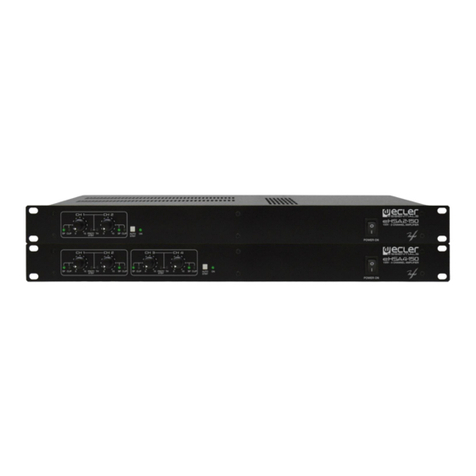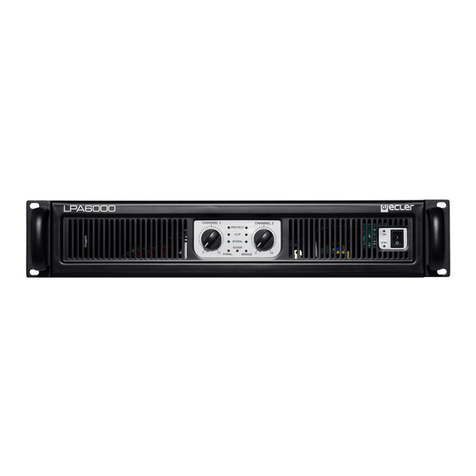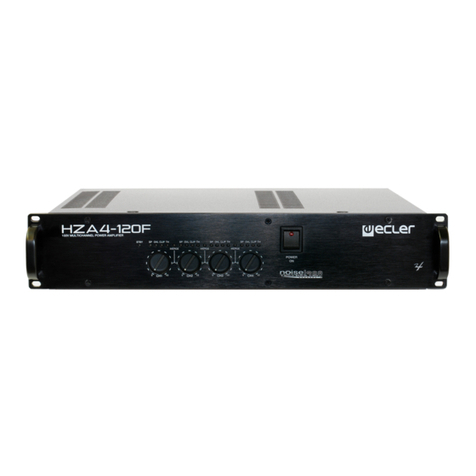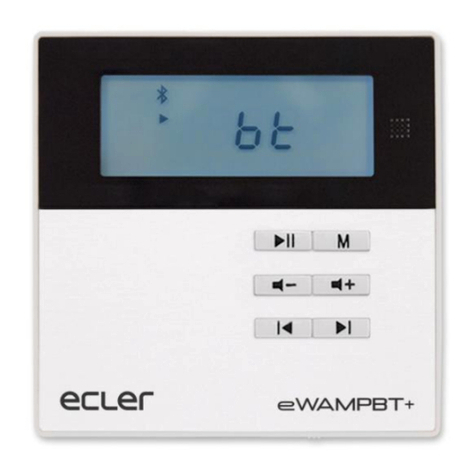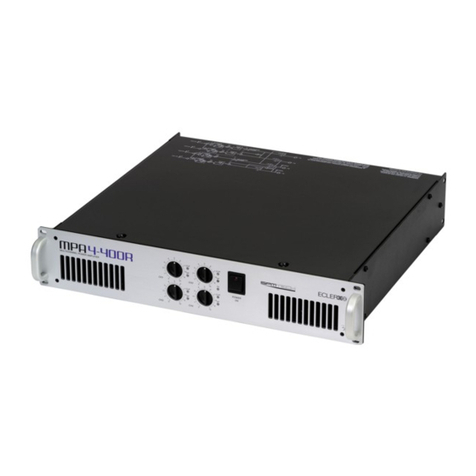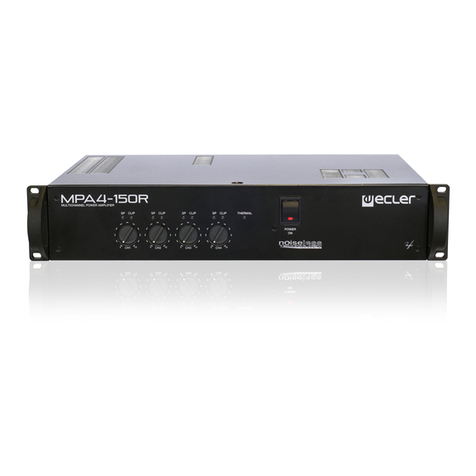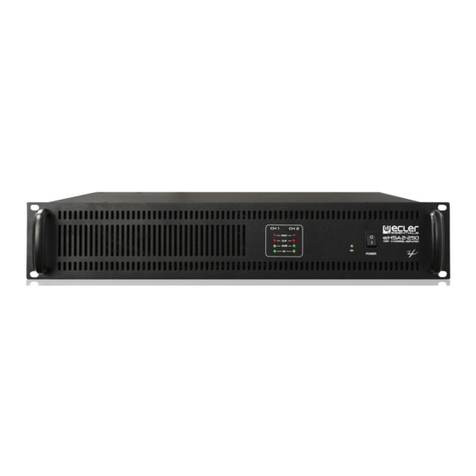
author: Queralt date: 000719
approved:
num: 52.0006 version: 01.00
FUNCTIONING DESCRIPTION
title:
EP05-99
The amplifying stage basic structure is actually the one commonly used until now, this
is, a push-pull mounted A-B class amplifier, using P-type (IRFP9240) and N-type
(IRFP240) mosfets.
The system's controlling core is a NE5534 OpAmp, which is internally compensated in
order to obtain an amplifying gain ratio equal or greater than 3. The amplifier's
feedback runs through a resistor and a capacitor associated to the OpAmp's non-
inverting input.
Transistors BF871 and BF872 are common-base configured, becoming actually a
current source structure. They accomplish a dual function: on one hand, they polarise
the mosfet's gate-source junction, keeping them on their conduction knee. On the other
hand, they carry out the OpAmp's output voltage variations, referred to signal ground.
The polarisation current adjustment is fixed by a 2k5 trimming potentiometer connected
to the BF transistors base. This current is added to the current source's output, which
passes through the BF-transistors load resistors. The bias current stability against
temperature is fixed through the BD437 transistors. Their temperature- dependent base
emitter voltage curve is used to alter adequately the current source's reference voltage.
As a consequence, if the temperature rises, the reference voltage decreases, thus the
gate-source voltage also does, and finally the bias current also decreases.
The Zobel network, formed by a resistor-inductor-capacitor group, and which is located
at the amplifier's output, intends to keep the amplifier's load impedance as constant as
possible, no matter which load is connected to the stage's output, or which signal
frequency is to be amplified, in order to prevent an inverted-phase feedback signal.
In order to avoid a DC offset on the output signal, a diac-triac tandem system is used,
which shorts the output to signal ground when the DC level is enough to get the diac
triggered. To prevent this from happening while carrying audio signal (sine-wave,
music), the diac's reference voltage is taken from a filter formed by resistor 33k2 and
capacitor 1µ.
The protection circuitry supervises at any time the power consumed by the MOSFETS.
The circuitry basically consists on two sections: MOSFET's drain current (Id) monitoring
and drain-source voltage (Vds) monitoring.
When Id exceeds a fixed values a control transistor in every branch starts to conduct
like a switch, apliying a parallel resistor to BF's load resisitor, reduring the gate-source
voltage, and also reducing Id.
If the MOSFET's drain-source voltage (Vds) drops too low, a second circuitry actuates
to alter the control-transistor's triggering level, obtaining a SOA-like curve section and
a current stage, which can be adjusted adequately in order to maintain the MOSFET's
power consumption as close as possible to its SOA.
ECLER
Sheet 1 of 2
